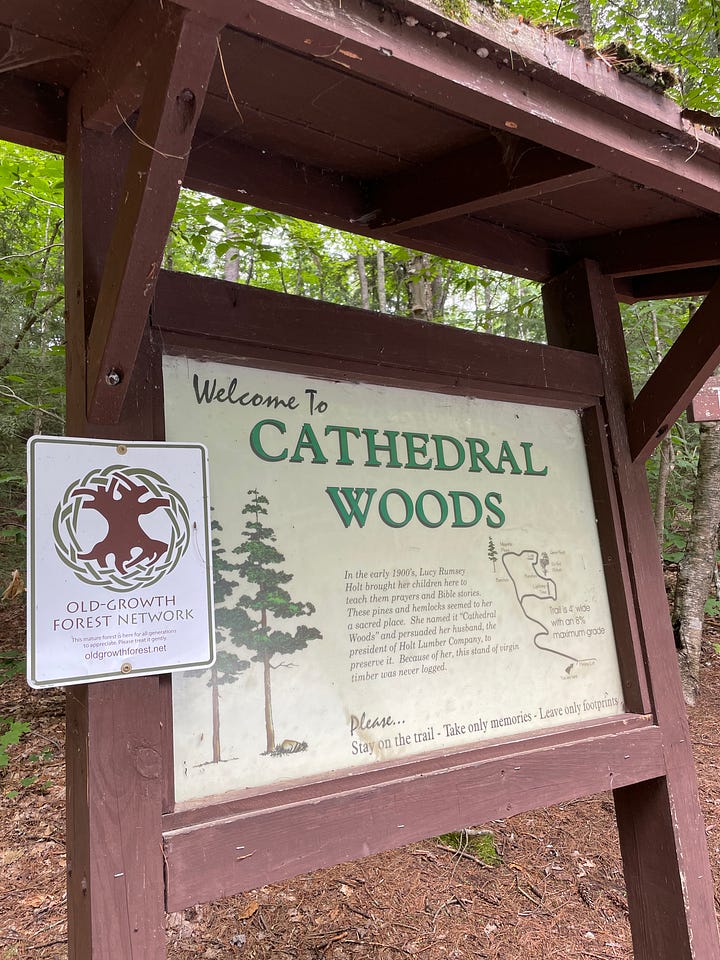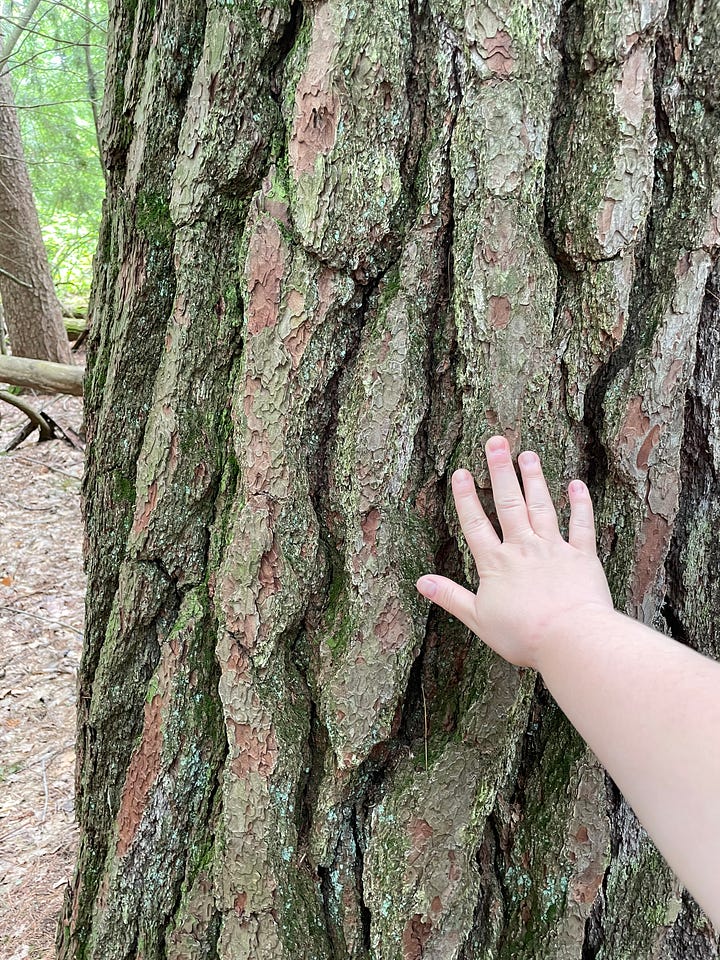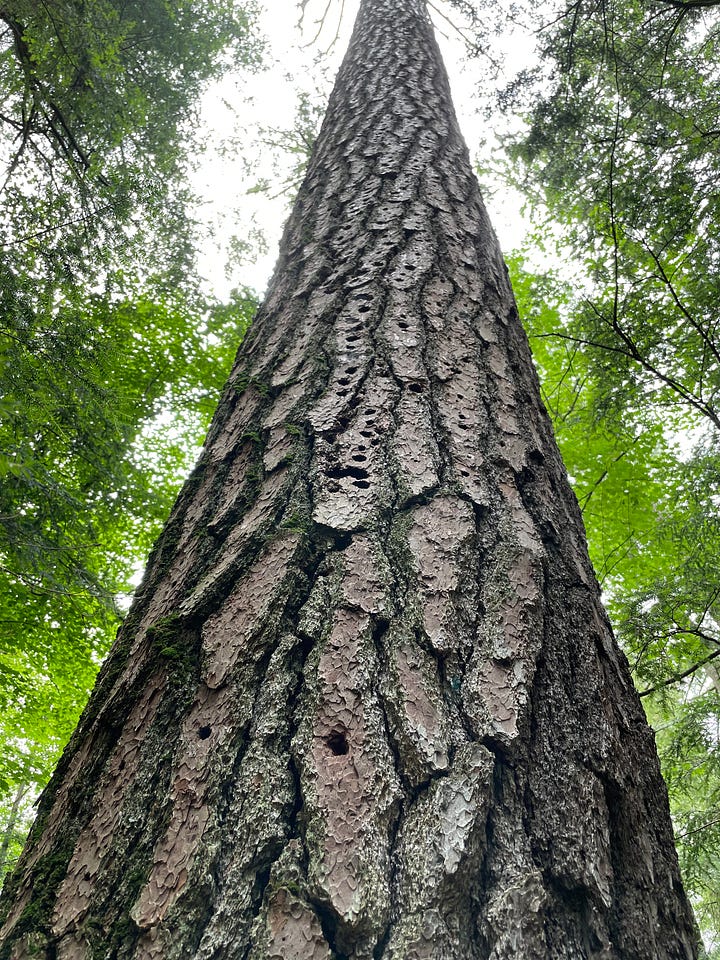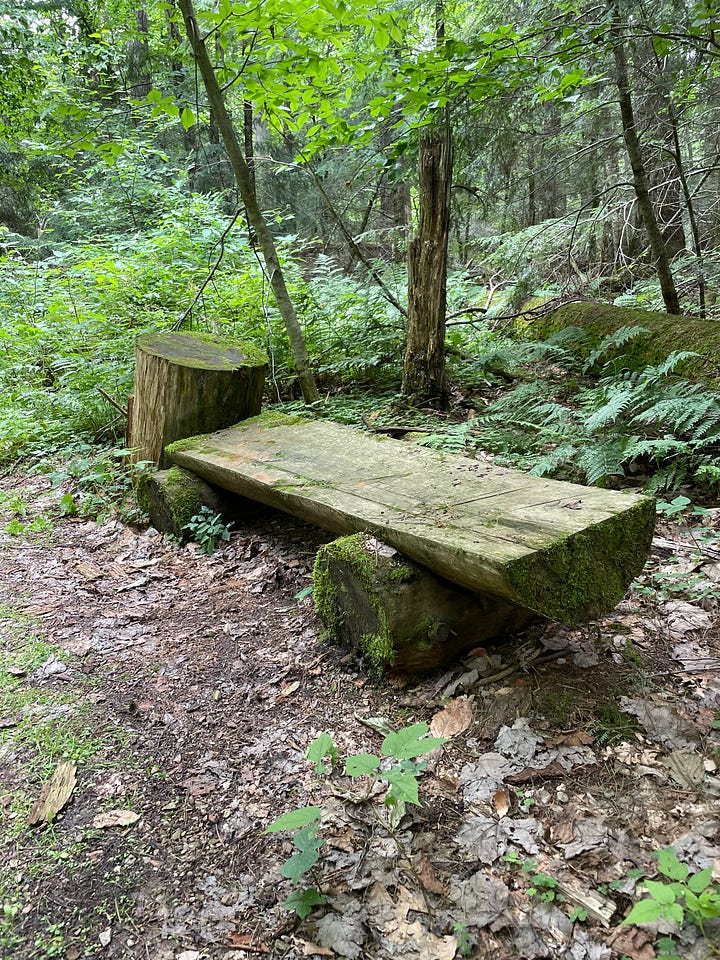I’ve challenged myself to try twelve new outdoor (and outdoor-adjacent) activities in 2025 to get out of my comfort zone and have some new adventures. This is a recap of one of those attempts.
I turned 37 this past week. For the past few years, I’ve celebrated with a birthday hike or backpacking trip, but the dreary weather and my snowballing to-do list kept me inside. Instead, I settled for reading a book about a tree that grows much older than I ever will—Pinus strobus, commonly called the Eastern White Pine.
This book wasn’t on my radar until I read a post by Dave Benson, who writes the wonderful and informative newsletter,
. He recommended White Pine: The Natural and Human History of a Foundational American Tree by John Pastor and I immediately put it on hold at my library. As you can see from the date of that original post, it took me a few months to actually get around to reading it—thank goodness no one else in the Chicago Public Library system was clamoring to check out this copy!However, white pines have been on my mind even longer than that. Last 4th of July weekend, I visited some friends in the Northwoods of Wisconsin. Our plan had been to watch the local parade and gorge ourselves on candy thrown from the floats, but when we mixed up the start time, we pivoted to a tour of interesting trees and waterfalls in the area instead. That brought us to Cathedral Pines in the Chequamegon-Nicolet National Forest, an old-growth forest featuring white pine, red pine, hemlock, and a rookery of great blue herons.
While much of the area around Cathedral Pines was logged over a century ago, this 40-acre section was spared for a unique reason. Lucy Rumsey Holt, the wife of a lumber company president, fell in love with the grove because “the sounds of breezes through these tall pines reminded her of a cathedral.”1 The trees were left standing for her enjoyment and thanks to her, I got to peek back in time and walk in the shade of trees that, according to arborists from the US Forest Service, have been growing since our country was still a British colony.




As I read the early chapters of White Pine, it became clear that not all who encountered the enormous white pines fell in love with their beauty and that many saw value in the trees only when they were detached from their roots. As Pastor writes:
“It is no coincidence that [Pietro] Pasqualigo, [Captain George] Weymouth, and [James] Rosier all immediately equated white pines with ships’ masts. The writings of these early explorers rarely described virgin forests as magnificent or awe-inspiring as we would today.”
It is hard for me to imagine not being awed by such a sight, but I suppose if you look at a forest as a timber yard, all you will see is timber. Lucy Rumsey Holt saw her patch of forest as someplace sacred and treated it as such.
I’m not going to bore you by summarizing all my favorite tidbits from White Pine2, but I will say that it has given me new things to think about when I am hiking through the Northwoods.3 Enormous, old trees are impressive, but so are all the other living (and dying) organisms that interact to impact the look and health of a forest. Next month, I’m heading up to the Blue Hills, near the town of Weyerhauser, WI. If that place is ringing a bell for you, it’s because it was named for the man (and company) who logged pine in northern Wisconsin and then moved on to log even taller pines in the Pacific Northwest. As a result, I’m unlikely to find 285-year-old white pines in the Blue Hills like the ones in Cathedral Pines. However, there will be other trees and plants and animals to observe.
Rather than just passing through the woods intent on reaching my destination, I want to really look at the ecosystem around me—slow down my pace, pull out the guidebooks, observe through binoculars. Will I find it as impressive as an old-growth forest? Maybe not, but I don’t want to make the same mistake that Pasqualigo, Weymouth, and Rosier did and take the existing trees—and everything connected to them—for granted. I don’t want to lose my sense of awe.
My trailbuilding friends who are reading this should expect to hear lots of white pine facts around the campfire at volunteer projects this summer!
And as all good nonfiction books should, it also added another half dozen titles to my reading list!







I once read a novel that’s apparently based on this story about Cathedral Pines. Written about 1915 maybe.
Happy birthday! No better way than to celebrate with a good book--unless it's a hike through the white pines!! Cathedral Pines sounds lovely...